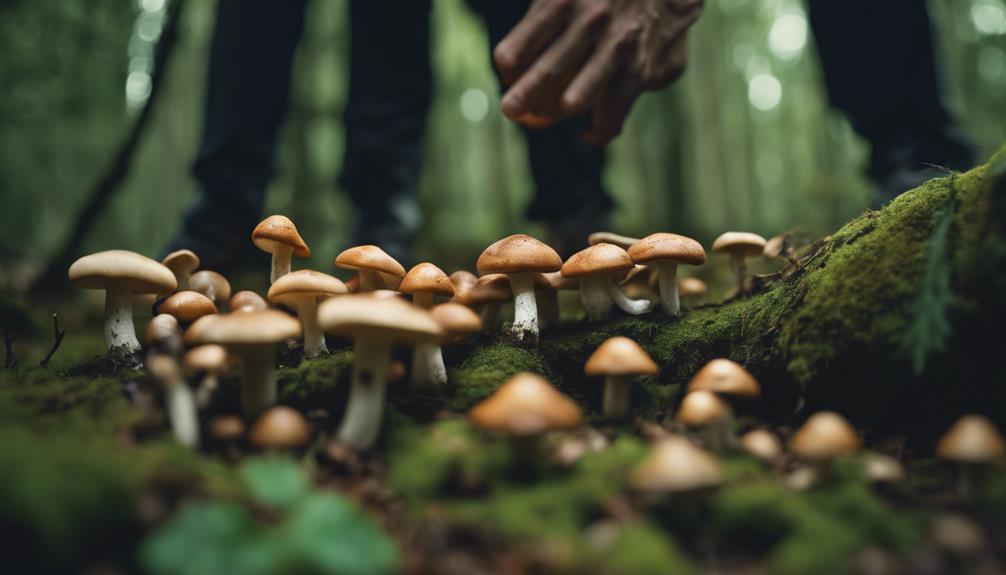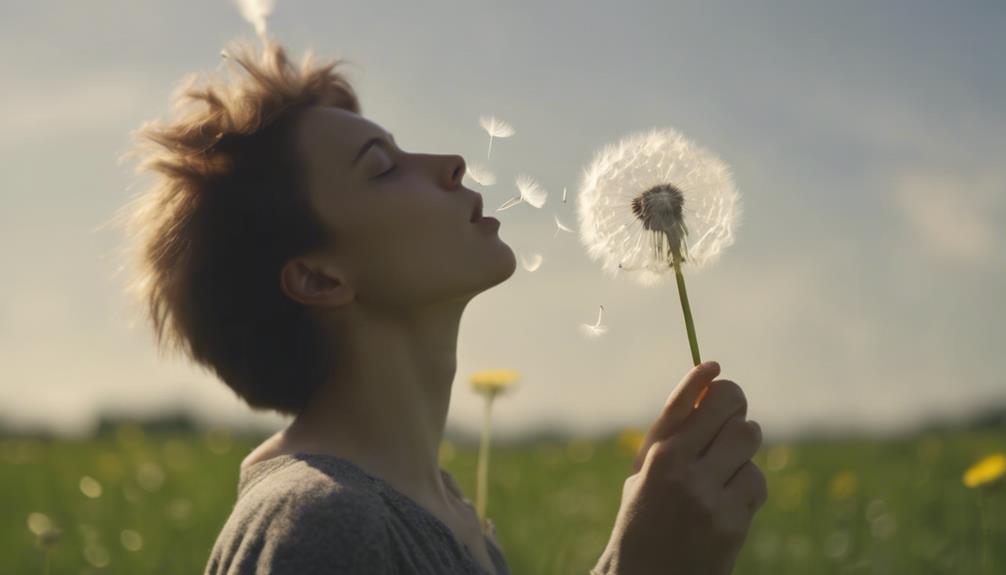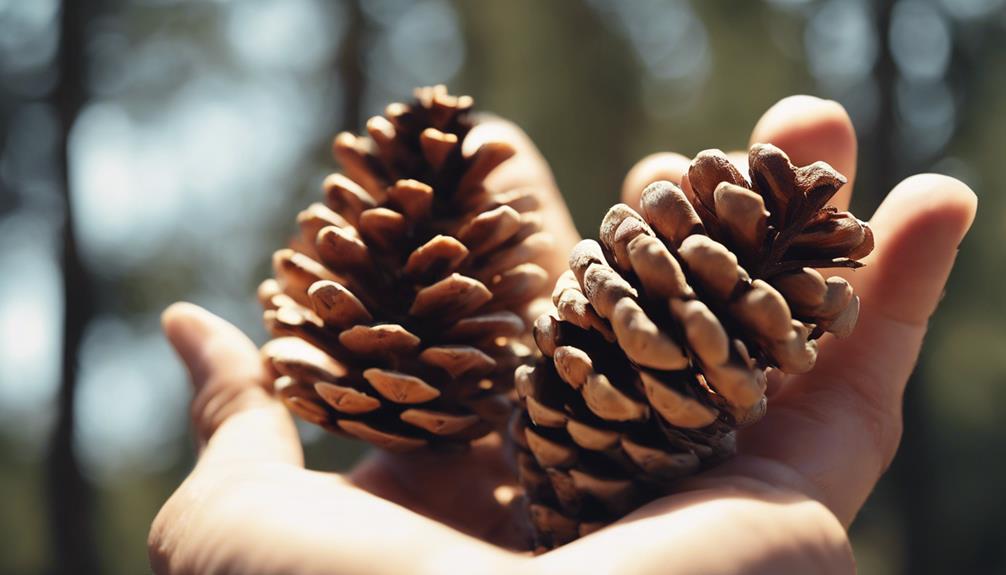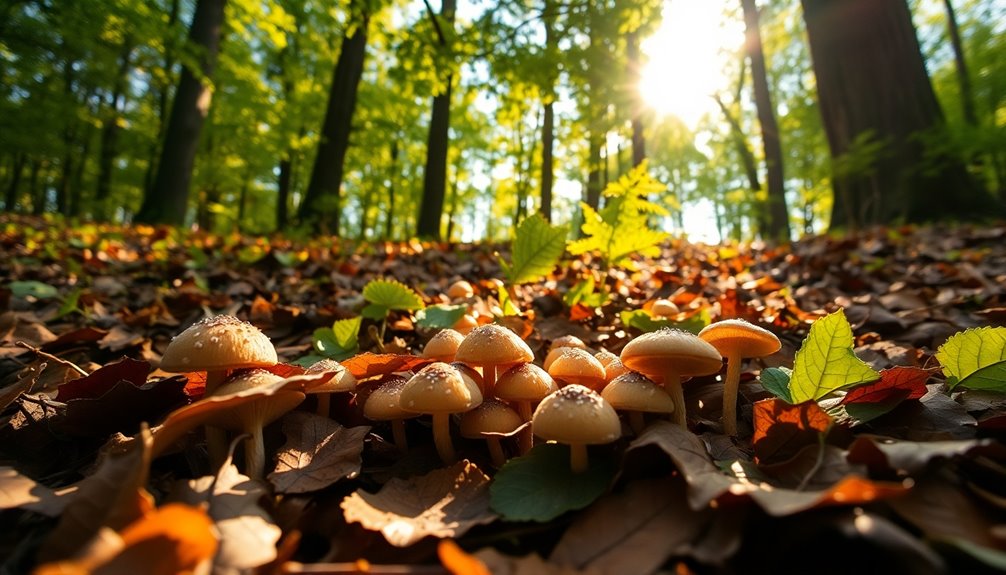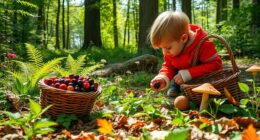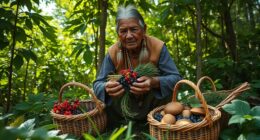When mushroom hunting, the critical difference between a delicious meal and potential danger lies in accurate identification. Guard yourself against toxic mushrooms such as Death Caps and False Morels. Prioritize safety by seeking expert guidance, steering clear of contaminated areas, and ensuring mushrooms are cooked thoroughly. Remember, consuming the wrong mushroom can result in severe consequences. Expert support and Poison Control are indispensable resources in times of uncertainty or poisoning. Your foraging adventure entails a delicate balance between culinary pleasure and careful exploration of nature’s diverse offerings. Uncover additional tips for safe mushroom hunting by delving deeper into the subject.
Key Takeaways
- Accurate identification is vital for safety.
- Poisonous mushrooms like Death Caps can be lethal.
- Seek guidance from experts to prevent dangers.
- Avoid consuming unknown mushrooms to stay safe.
- Mycologists aid in precise identification for treatment.
The Importance of Mushroom Identification
Identifying mushrooms correctly is essential for your safety and well-being when foraging. Seven years ago, in a small town, you set out on your first mushroom hunting expedition. Excitement filled the air as you explored into the forest, keen to find hidden treasures among the trees.
Little did you know the importance of accurate mushroom identification at that time. As you navigated through the undergrowth, the sheer diversity of mushrooms amazed you. Each specimen seemed more intriguing than the last, but you were unaware of the potential dangers lurking beneath their enticing exteriors.
It wasn't until you met an experienced forager who emphasized the critical nature of proper identification that you realized the gravity of the situation. Avoiding toxic mushrooms became your top priority as you explored further into the world of foraging.
The lessons learned that day have stayed with you ever since, shaping your approach to mushroom hunting and highlighting the necessity of accurate identification for your safety.
Common Poisonous Mushrooms to Avoid
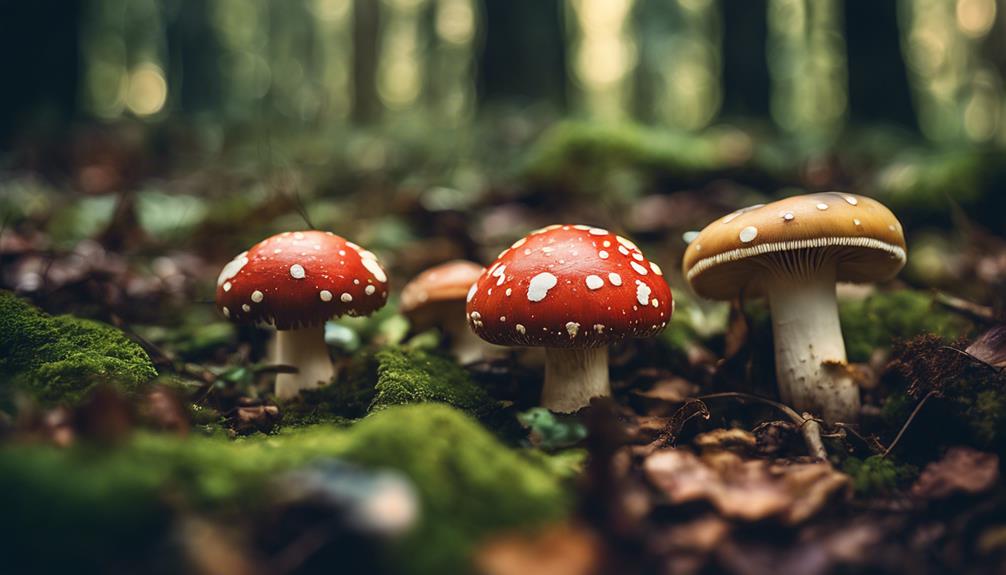
To ensure your safety while foraging for mushrooms, it's essential to be aware of common poisonous varieties that should be avoided. Even though mushroom foraging can be a rewarding experience, consuming the wrong mushroom can have severe consequences.
Here are some common poisonous mushrooms you should steer clear of:
- Amanita phalloides (Death Cap mushroom): This deadly mushroom resembles edible species, making it particularly risky for novice foragers.
- Gyromitra esculenta (False Morel mushroom): Despite its appealing appearance, this mushroom can cause serious poisoning and even death if ingested.
- Destroying Angel mushrooms (Amanita bisporigera and Amanita ocreata): These toxic mushrooms contain deadly toxins that can lead to organ failure, underscoring the importance of accurate identification.
Being cautious and avoiding these poisonous mushrooms is essential for your well-being while foraging. If you're not sure about a mushroom's identity, it's better to err on the side of caution and refrain from consuming it.
Safety Tips for Mushroom Foraging
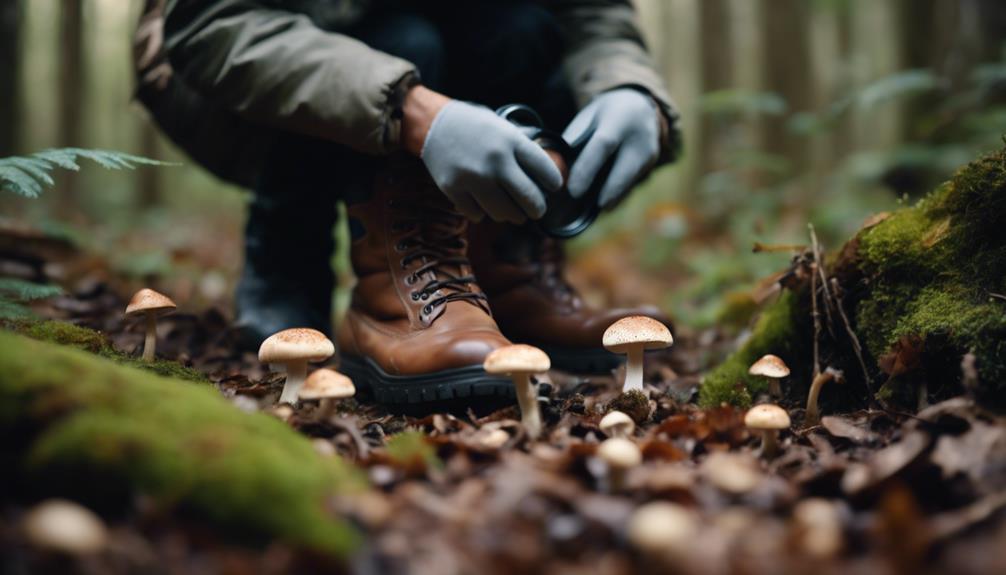
When venturing into the activity of mushroom foraging, your safety is paramount, and following key safety tips can guarantee a positive and secure experience.
Always positively identify a mushroom before consuming it to avoid serious illness or even death from misidentification. Avoid picking mushrooms in areas that may be contaminated with pesticides, herbicides, or other chemicals, as these can be harmful if ingested.
Be cautious of poisonous look-alike mushrooms, such as the deadly Amanita species, and seek guidance from a field guide or expert when in doubt. Educate yourself on the potential dangers of wild mushrooms by foraging with an experienced person to learn safe practices.
Even edible mushrooms can cause adverse reactions in some individuals, so it's wise to start with small portions and monitor your body's response closely. Prioritizing these safety tips will guarantee a rewarding and risk-free mushroom foraging experience.
Mushroom Foraging Dos and Don'ts
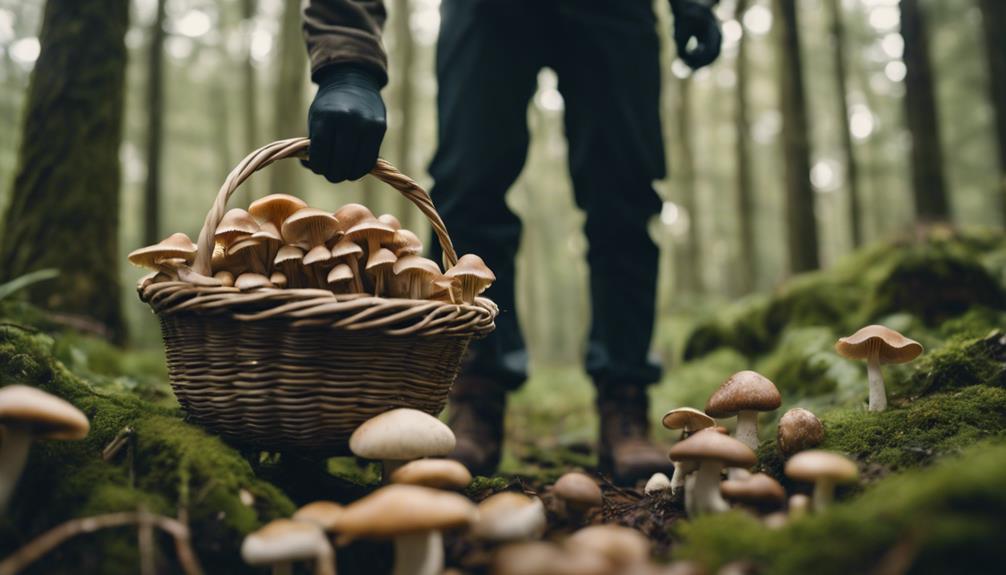
Before starting on your mushroom foraging journey, it's essential to familiarize yourself with safety tips and identification guidelines.
Always remember: do your research, use reliable resources, and seek guidance from experts to guarantee a safe and enjoyable foraging experience.
Following these dos and don'ts will help you navigate the world of mushroom foraging responsibly and confidently.
Safety Tips
For safe mushroom foraging, always make sure you research and educate yourself on the types of mushrooms you plan to collect. Misidentifying mushrooms can have severe consequences, so take the time to study and understand the species you're seeking.
Here are three essential safety tips to keep in mind while foraging:
- Always bring a reliable field guide or use a reputable mushroom identification app: Accurate identification is vital to avoid picking toxic mushrooms. These resources can help you differentiate between edible and poisonous varieties.
- Avoid foraging in potentially contaminated areas: Stay away from places where mushrooms may have been exposed to harmful chemicals like pesticides or herbicides. Your safety is paramount, so choose your foraging spots wisely.
- Do not consume foraged mushrooms raw: Some mushrooms contain toxins that are only broken down through cooking. To prevent any adverse effects, make sure to cook all foraged mushrooms thoroughly before consumption.
Identification Guidelines
Researching and educating yourself on mushroom identification is crucial to safely foraging for mushrooms. To accurately identify mushrooms, utilize field guides, online resources, and seek advice from experts. Never consume any mushroom unless you're absolutely certain of its identity.
When identifying mushrooms, focus on key features such as cap shape, gills, spore print, and habitat. Remember not to rely solely on visual cues; factors like smell, taste, and touch can also assist in identification. Enhance your skills by seeking guidance from experienced foragers or mycologists.
Signs of Mushroom Poisoning
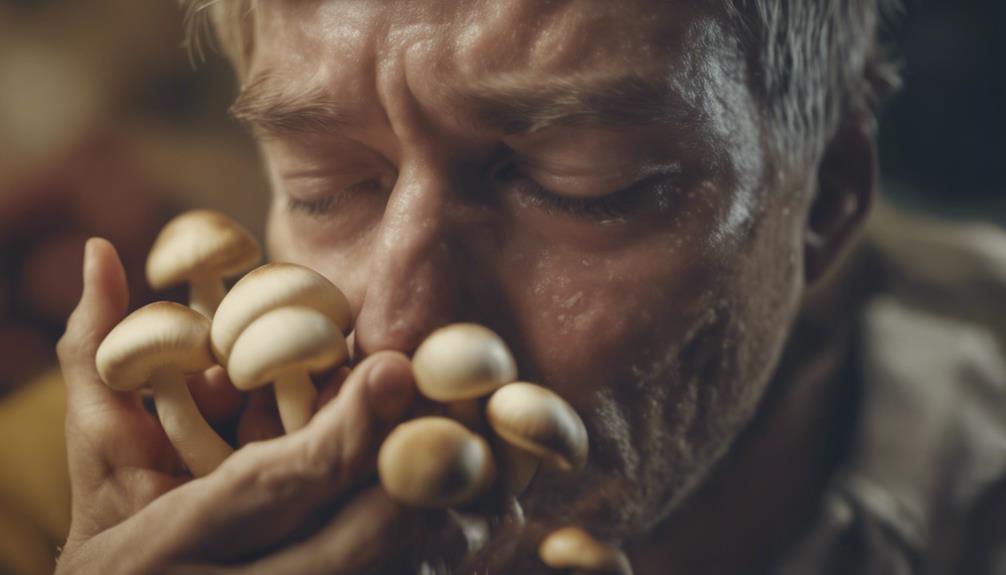
Early recognition of the signs of mushroom poisoning is essential for prompt medical intervention and treatment. If you suspect mushroom poisoning, pay close attention to the following symptoms:
- Gastrointestinal Distress: Watch out for symptoms like nausea, vomiting, abdominal pain, and diarrhea. These are common early signs of mushroom poisoning and shouldn't be ignored.
- Organ Damage: Some poisonous mushrooms can lead to severe complications such as liver or kidney damage, which mightn't manifest immediate symptoms. Be vigilant for any unusual changes in your health after consuming mushrooms.
- Neurological Symptoms: In some cases, mushroom poisoning can cause neurological symptoms like confusion, hallucinations, or seizures. If you or someone else experiences these symptoms after mushroom consumption, seek urgent medical attention.
Seeking Professional Help if Poisoned
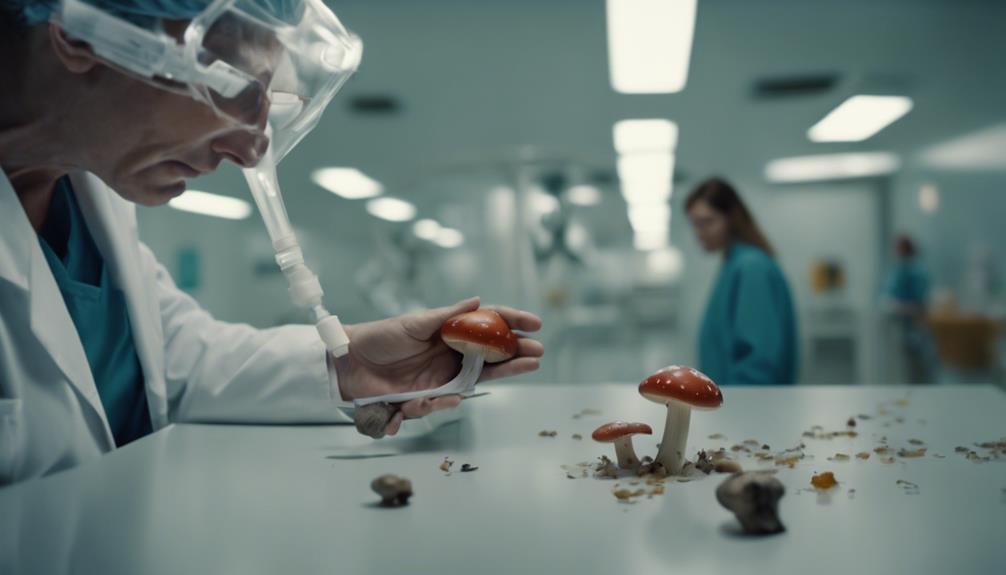
If you suspect mushroom poisoning, it's vital to seek immediate medical attention. Contacting poison control or visiting a healthcare professional can provide expert identification assistance.
Immediate Medical Attention
Seek immediate medical attention if you suspect mushroom poisoning, as professional help is essential for proper identification and treatment. Toxic mushrooms can pose serious health risks, and prompt medical intervention is vital.
Here are three reasons why seeking immediate medical attention is imperative:
- Identification of the Poisonous Mushroom: Professional healthcare providers are trained to identify the specific type of toxic mushroom ingested, which is essential for determining the appropriate treatment.
- Treatment Tailored to the Poisoning: Medical professionals can administer specific treatments to counteract the effects of the poisonous mushroom, potentially saving your life or minimizing long-term health consequences.
- Prevention of Severe Complications: Delaying medical assistance for mushroom poisoning can lead to severe complications, including organ damage or even death. Seeking immediate help increases the chances of a successful outcome and a quicker recovery.
Contact Poison Control
Contacting Poison Control immediately after ingesting a poisonous mushroom can be a life-saving step in receiving prompt and essential guidance for proper treatment. By dialing 1-800-222-1222, you can access professional help from experts specialized in toxicology.
These professionals can provide vital information on the specific toxic effects of the mushroom you consumed. Their guidance extends to identifying the mushroom species ingested and recommending appropriate medical treatment accordingly.
Time is of the essence in such situations, making it imperative to reach out to Poison Control as soon as possible. The swifter the response, the greater the likelihood of receiving effective treatment and averting serious health complications.
Even if symptoms of mushroom poisoning haven't manifested, it's essential to consult Poison Control, as some toxic mushrooms exhibit delayed effects.
Expert Identification Assistance
Utilizing professional assistance for identifying the mushroom ingested is essential in cases of suspected poisoning. When faced with the alarming possibility of mushroom poisoning, seeking expert help can be a life-saving decision. Here's why:
- Accuracy: Professional mycologists and poison control centers possess the expertise needed to accurately identify the type of mushroom consumed, ensuring appropriate treatment.
- Prompt Action: Prompt medical attention is vital in cases of mushroom poisoning. Expert identification can expedite the process, leading to quicker and more effective treatment.
- Life or Death: Symptoms of mushroom poisoning can vary widely, underscoring the importance of precise identification. The right diagnosis can mean the difference between life and death, highlighting the critical role of expert assistance in such situations.
Frequently Asked Questions
What Is the Saying About Mushroom Forager?
You should know the saying about mushroom foragers: "There are old mushroom foragers, and there are bold mushroom foragers, but there are no old, bold mushroom foragers." Safety and knowledge are key.
What Are the Benefits of Mushroom Foraging?
When you forage mushrooms, you immerse yourself in nature, finding rare treasures like hidden gems. It's a sustainable way to connect with the environment, learn about different species, and unwind, benefiting your well-being.
Does Picking Morels Hurt Them?
Picking morels doesn't hurt them. Harvest responsibly by cutting the stem above ground. Leaving some behind promotes growth. Help sustain the ecosystem by practicing ethical foraging. Support the longevity of morel populations.
Why Could Picking a Wild Mushroom Be Harmful Ecologically?
Picking a wild mushroom can disrupt delicate ecosystems. By removing these essential decomposers, you upset the natural balance. Leave them be to support biodiversity. Sustainable foraging practices are key to ecosystem health.
Conclusion
Remember, when it comes to mushroom foraging, the stakes are high. One wrong identification could lead to serious consequences. Take the time to study, learn, and always err on the side of caution.
Your life may depend on it. Stay safe, stay informed, and happy foraging!

